SaaS businesses: Do you need more qualified leads? It’s time to invest in a digital advertising strategy that works.
Here, you’ll find:
- The benefits of digital advertising for SaaS
- Common mistakes SaaS makes with digital advertising
- Top strategies for SaaS digital advertising
- Examples of SaaS brands doing digital advertising right
Software as a service (SaaS) businesses have a long and complex sales cycle that can take months to close, especially in the business-to-business (B2B) space. So having a pipeline filled with warm leads is your top priority.
Easier said than done — getting more SaaS leads requires a thorough digital marketing strategy for SaaS businesses specifically.
And that’s what we’ll discuss today.
What is digital advertising for SaaS?
Digital advertising for SaaS is a marketing plan made up of several digital channels working together to promote a SaaS brand and product.
However, “digital advertising” is one of those umbrella terms with a fuzzy definition. Some consider digital advertising to be online advertisements (meaning paid forms of digital marketing, like Google Ads and social media advertising).
Others consider digital advertising to be synonymous with “digital marketing“ — the term for all forms of online marketing, a la pay-per-click (PPC) advertising, search engine optimization (SEO), content marketing, social media marketing, and email marketing.
The thing is, PPC is the most effective marketing strategy for SaaS businesses — as long as your other marketing channels are working well.
While PPC ads are the “main event” in this marketing plan, there are other marketing channels that need to be included to thrive.
Benefits of digital advertising for SaaS
When it comes to marketing your SaaS platform online, the options are virtually endless.
However, none guarantee visibility and clicks like PPC ads — so long as your plan encompasses both paid and organic marketing strategies. (More on that later.)
First, here’s a look at the top benefits of using digital advertising to attract SaaS customers:
1. Reach a larger target audience (immediately): Pay-per-click ads’ potential reach is massive. The only traditional marketing channel that can compare is television.
2. Track and measure your results: Digital marketing campaigns simplify tracking and measuring the results of your SaaS marketing strategy. Tools like Google Analytics show how many people viewed, clicked, and converted into a lead or customer to determine if your campaign is working.
3. Target your audience precisely: Digital advertising enables you to target your audience based on their location, age, gender, interests, and more.
4. Save money: Traditional marketing methods are expensive. You have to pay for ad space or airtime, which can cost into the tens or even hundreds of thousands.
5. Scale your campaign: Ads and content bringing in a ton of hot leads? Scale up your campaigns by raising your budget and content output. If the opposite is true, scale back or even halt the campaign to test different keywords, ad copy, and content topics or formats.
6. Test different messages and strategies: Digital advertising is experiment friendly. You can test various messages and strategies each month to see what works and what doesn’t. Adjusting your campaigns is pivotal to maximizing your results and getting the most out of your ad spend.
7. Start today: You control your monthly marketing budget — start with ads for just $20/day. Or hire a team of freelancers to produce content within your financial restraints.
8. Automate advertising: No need to manage every aspect of your ad campaigns. Platforms like Google offer automation features that select relevant keywords to boost clicks and conversions. In other words — set up your campaign and let it run on autopilot (but still keep an eye on it).
9. Retarget warm leads: Email and blog content is on point. But some leads aren’t ready to convert into buyers, and that’s okay! But don’t let them get away — use ad retargeting campaigns to remind them of your SaaS platform wherever they go on the web.
10. Improve customer retention: Keep existing customers engaged with email marketing campaigns and content that provides tons of value.
Common mistakes SaaS brands make with digital advertising
Attempting to run your own digital advertising campaigns is tricky. Knowing how to analyze data and understand how to improve your campaigns is key to achieving optimal results.
Here’s a look at some of the most common mistakes SaaS brands make with digital advertising:
1. No clear objective: What are your key performance indicators (KPIs)? Sure, you want to get more leads and traffic, but be more specific. For example, you want to increase lead form submissions by 10% by Q2. Or you want to boost traffic by 15% and conversions by 7%. The clearer your objective, the easier it is to see if you’re on track to reaching your goals.
2. Not targeting the right audience: Who are you targeting in your digital ad campaigns? If you don’t have a specific person or group, then your messaging and offer may not speak to their pain points. If you have multiple customers, then create an ad group for each.
3. No clear call to action (CTA): When people read your ad, will they understand what you want them to do? Place a clear (and enticing) call to action in your ads, emails, and blog posts — call now, sign up now, book a demo, watch our demo, read our guide, etc.
4. Not tracking your results: In digital advertising, data is your friend. It tells you what’s happening in each campaign and why. Then you can use that to improve or remove campaigns. Metrics matter!
5. Not making adjustments: Optimization is the name of the game in digital advertising. Once the data tells you what’s wrong with your campaigns, you must be open to adjusting your strategy. Sometimes, you’ll scale a campaign, and other times, you’ll shut it down to test another audience, keyword group, channels, or offer.
6. Using broad keywords: The more broad a keyword, the wider the audience. But this doesn’t help if the majority of people won’t use your SaaS platform. Narrowing down your keywords will target the right people, increasing your conversions. It’ll also save you money on clicks from irrelevant visitors.
7. Not offering informational assets: Never expect people to understand how your SaaS tool works or how it can benefit them. Stating what your tool is, how it works, and why people should buy it (instead of a competitor) is critical. Do this by offering free downloadable guides, video demos, whitepapers, case studies, and other informative content.
8. Using the wrong channels: Sticking to just ads and blog posts will limit your reach and visibility. Consider adding other channels your audience uses, such as social media, email, and video.
There’s a lot to learn in SaaS advertising, which is the reason some opt for a SaaS digital marketing agency. So don’t feel you have to do it all on your own!
What are the best ad platforms for SaaS?
Is Facebook a good place to advertise your Saas? How about LinkedIn or TikTok?
It’s possible to gain traction on these platforms, but they aren’t the best suited for SaaS companies (especially startups with no followers).
So where should you invest your marketing efforts (and ad dollars)?
“Google is the top because its searchers have high intent,” says Steven Dang, VP of Growth and Strategy at HawkSEM. “When someone types in a keyword or term in Google, they’re motivated to learn about or take action on that particular subject.”
Paid search creates a crossroads for brands to be seen in the searcher’s moment of need.
Here’s an example of what you’ll find in paid search for the term “invoicing cloud software.”
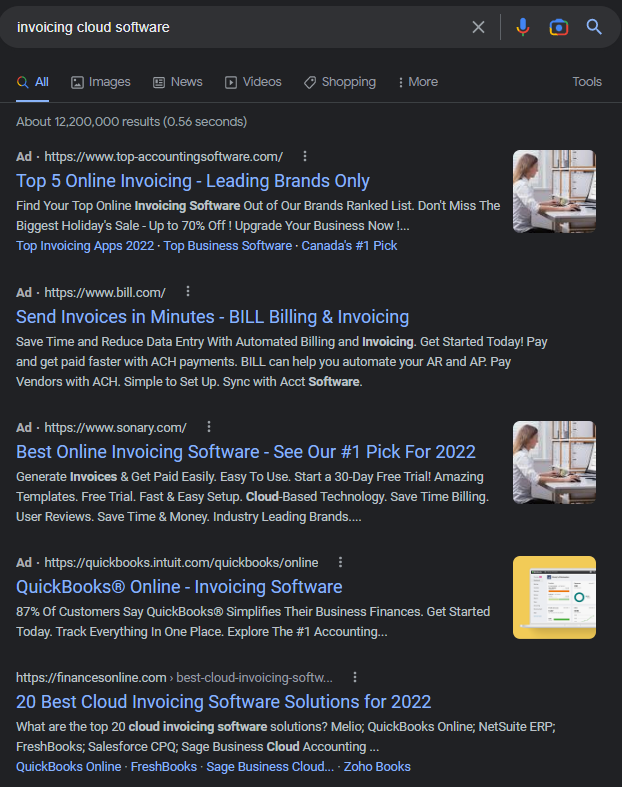
What’s great about Google’s ads is that they appear at the top of search and look like organic results. They have images on the side and even lead to blog posts.
Just avoid stock photos, so you don’t make the mistake of sharing the same image as a competitor (as you see above). Instead, use high-quality branded images to stand apart.
And while Google is superior, it’s not the only place to advertise your SaaS business.
“After Google Ads, LinkedIn would be #2 because of its B2B nature, and the ability to customize audiences based on the size of the company, industry, job titles, and experience,” says Dang.
Here’s an example of a SaaS ad that highlights another reason LinkedIn is awesome: it allows you to use video.
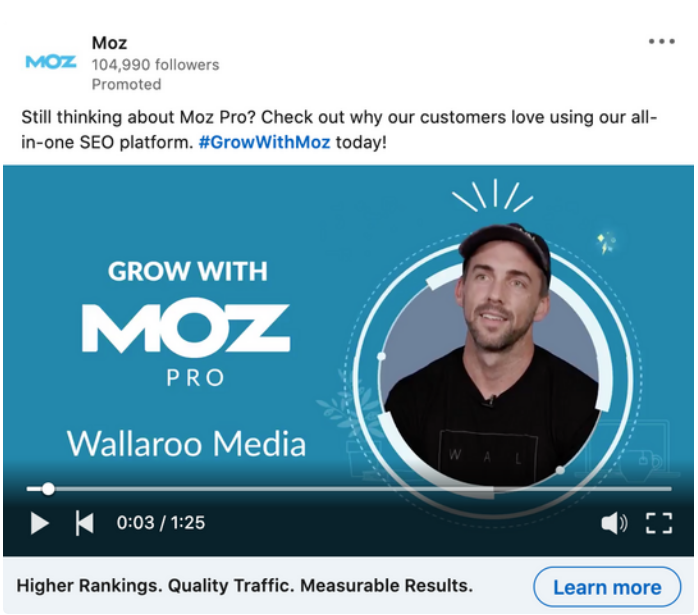
It also allows media like large images, downloadable content and carousels. Plus, it shows social proof at the top — 104,990 followers.
Top digital advertising trends for SaaS (that actually work)
You have your SaaS ad platforms to use — now you need a strategy that encompasses all areas of digital marketing, including email, content, social media, PPC, and SEO.
Here’s a look at how you can ensure your digital advertising is a well-oiled machine.
Capture leads from every stage of the sales funnel
Digital SaaS ads do one thing extremely well: Getting more people to learn about your brand. But once users click on your ad, what happens next depends on what’s on your landing page.
It needs to speak to your audience, sure. But because prospective customers have different concerns at different stages in the buyer journey, you need to create content for each phase of the funnel.
Here’s how to do that.
Top of the funnel
Top-of-the-funnel (ToFu) audiences are at the education stage. They may not be aware of an issue they have, or that there’s a solution. So it’s up to you to capture their attention with an ad that brings it to light.
Create content using high-traffic, top-of-the-funnel keywords to increase organic visits to your site. You can also use paid ads to boost visibility.
In this SaaS ad, Lever introduces a problem their prospects may be familiar with — sourcing candidates for open roles:
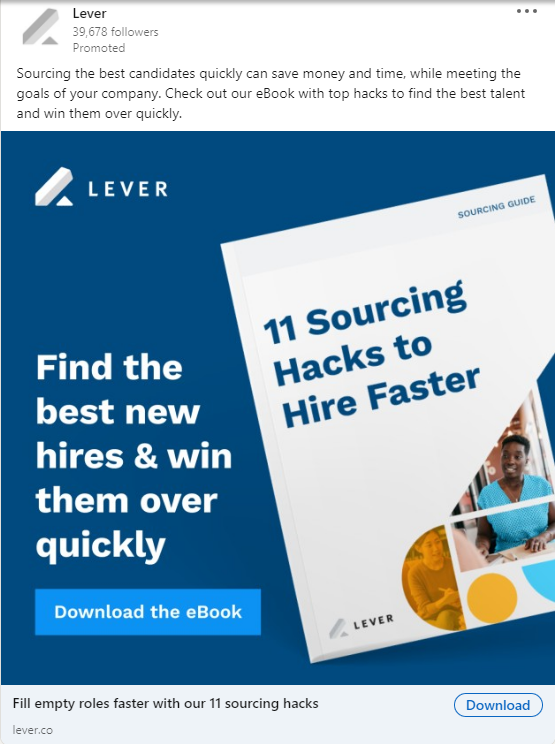
It’s a downloadable ebook that explains various methods to find better candidates. And then gently introduces its brand as a solution and the benefits of using its platform.
A subtle way to market your company to potential customers who’ve never heard of you.
It also does something similar in another ad. This time it leads prospects to a blog post, showing you can use different formats for your ToFu audience.
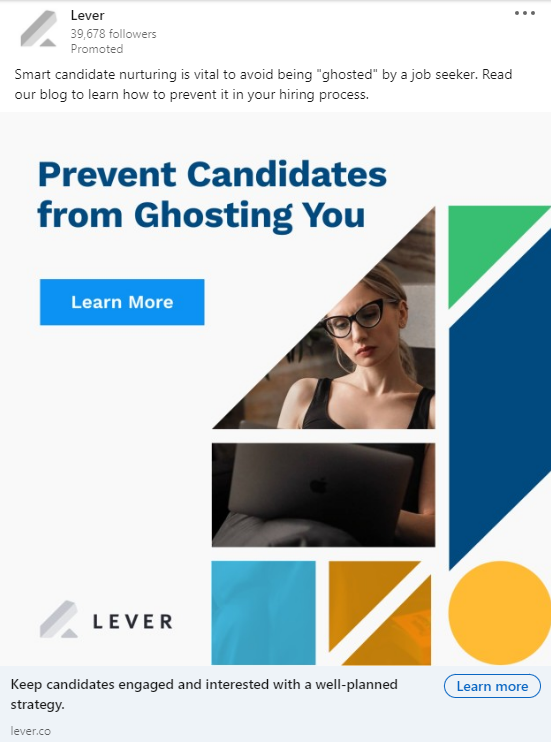
Middle of the funnel
Middle-of-the-funnel (MoFu) audiences are interested, but they want more information to decide. They’ll look for case studies, customer reviews, success stories, testimonials, and whitepapers to guide their decision.
So build this type of content for your blog and drive traffic to it using PPC ads, email marketing, and social media.
In this example, Salesforce shows off various customer results in a carousel. The images are eye-catching, especially the large numbers, which show the benefit each customer witnessed:
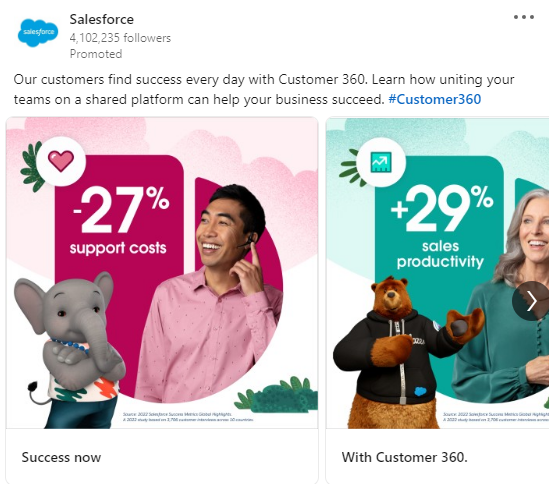
This is a more direct approach and answers a question many MoFu prospects ask:
Why should I choose your brand over the others?
Bottom of the funnel
Bottom-of-the-funnel (BoFu) audiences are ready to purchase, but they’re interested in your SaaS product’s features and how they can help their business. So it’s your job to show them how easy it is to use, and the value it provides.
Webinars, video tutorials, and case studies are excellent pieces of content to create on your website. You can also use paid ads to share your content with audiences who are ready to convert.
In the first example, HCLTech targets audiences desiring to improve its user experience and brand loyalty. Instead of offering informational content, it goes for the hard sale “Request a demo.”
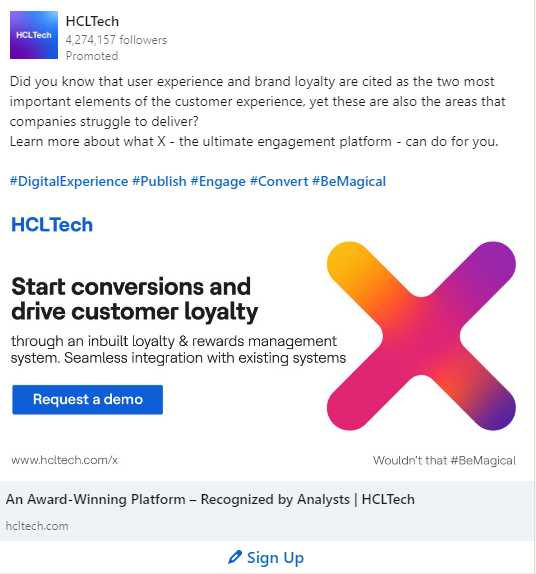
This works because it makes a promise and offers to show you how. If the demo is impressive (and the price is right), many will convert into customers.
In this next example, Knak gets specific in its ad by telling prospects exactly what to expect: get to market up to 95% faster.

Then it explains how simple it is to achieve without technical knowledge and offers a free demo.
Re-engage leads using ad retargeting campaigns
Ad retargeting campaigns are high-converting because they improve brand recall, and increase brand awareness. They work by placing cookies or pixels on users’ computers to track them.
Whenever a user visits your website (aka clicks your ad), you can then serve them ads as they browse other sites on the internet. And hopefully, these users will return to complete their signup or purchase.
Optimize landing pages for conversions
Where you send prospects that click your ads will determine your conversion rate. Of course, you’ll also need to have ads that target the right groups — otherwise, you’re sending irrelevant traffic to your landing page (and wasting your ad budget).
Landing page optimization was one tactic we used to help Zephyr bring more qualified leads into its pipeline, while reducing its cost per acquisition (CPA), which was around $300.
Its original landing page was turning away prospects because it wasn’t engaging and its form was too long.
After fixing the landing page and lead form, and improving the look of its ads across all platforms (e.g., Google Display Network and AdRoll), its engagement and click-through rate soared.
Zephyr saw a 10% increase in lead volume, a $250 reduction in CPA (to $50), and a 2.5% CTR (up from below 1%). Read the Zephyr case study here.
Zephyr was acquired by Smartbear, but it still has an engaging landing page.
When we first enter, there’s a clear message of its offer, a CTA, and an enticing video with a benefit that pops out (60% less time wasted).
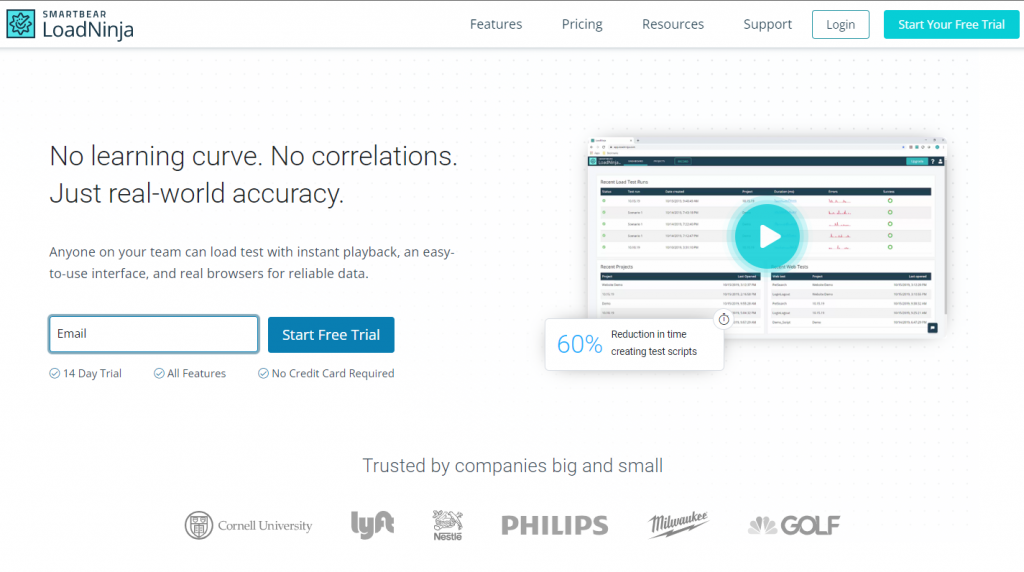
Scroll down and you’ll see an on-site demo of the platform. Visitors can click through the menu to see how it works and then complete the call to action.
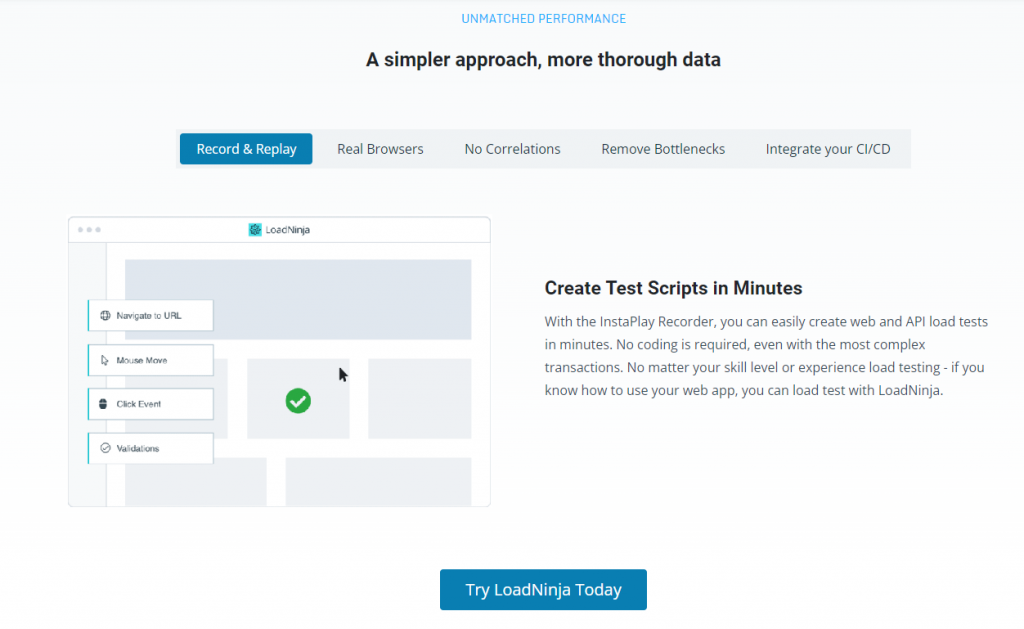
It ends with clear benefits expressed in numbers and social proof in the form of a testimonial.
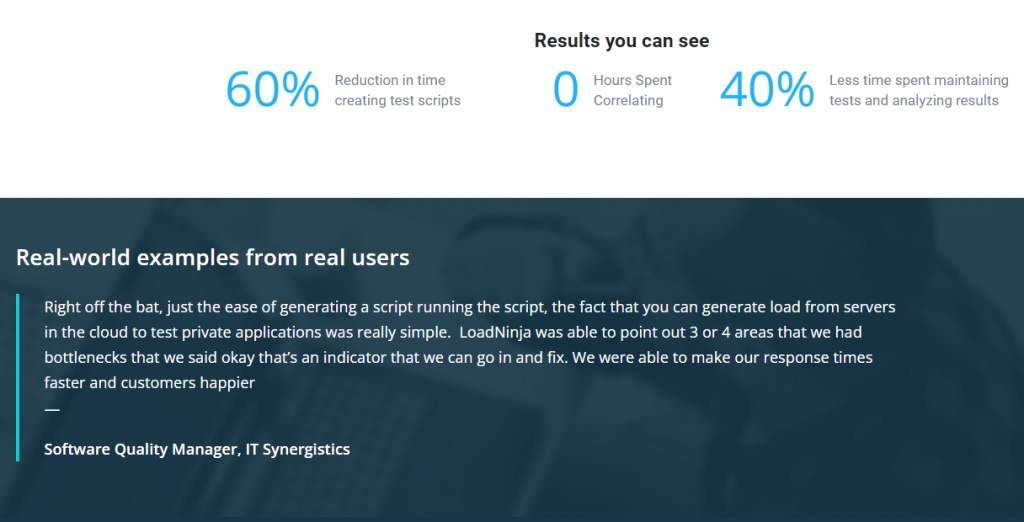
Educate prospects using informational assets
“Longer consideration cycle, a greater need to educate the customer, and the greater importance of giving prospective customers informational assets,” says Dang.
And for this reason, you want to home in on informational assets in your content marketing strategy. We already covered a few of them, which you use at the top of the funnel.
But here’s another example of how you can use different formats to achieve your goal to educate:

Vimeo used a free webinar to educate its audience, which likely has an offer at the end, such as a free trial, discount for several months, or something similar.
Add video demos and explainers to your landing page
You only get one chance to attract and retain visitors that click your ads. Nothing does this better than video.
Look at this example from Loxo:
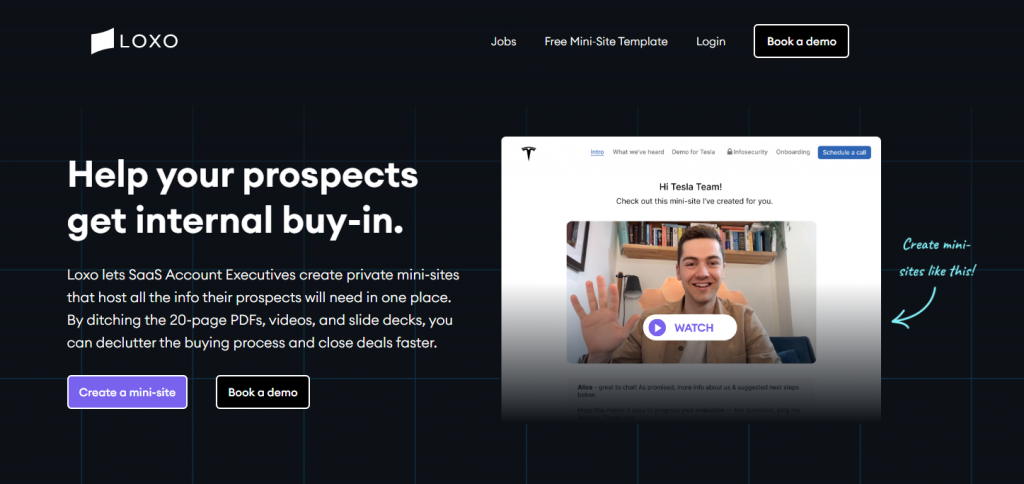
Odds are, your eyes look at the video first.
What makes this video more eye-catching is that there’s a person in it (the founder). People attract people — it’s why retail brands hire models to wear, hold, or use their products in images.
Build an email marketing list
Email marketing is the only channel you (kinda) own. No algorithms to worry about or site shutdowns. You’re in control of when you connect with users (as long as it passes the spam filter).
So use this opportunity to send conversion-focused messages that can be segmented by customer behavior. It’s also a great way to reactivate old leads who haven’t converted in the nudging process.
Here’s an example of how Wix entices its leads to convert:
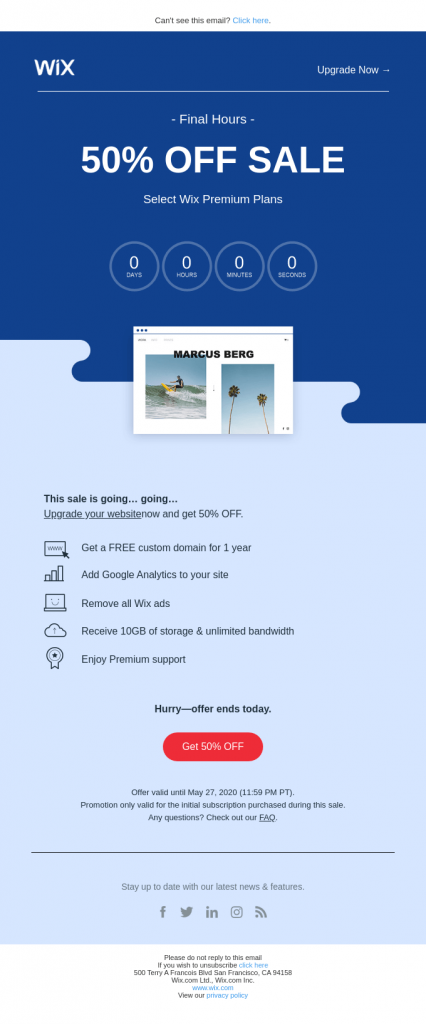
Check your website’s technical SEO
Checking the technical SEO of your website is important for your digital marketing strategy because it ensures search engines can easily crawl and index your website. When Google bots can crawl your site, it increases your visibility and ranking in search engine results pages.
Without an indexed website, all of your paid and organic marketing campaigns are for nothing.
But how do you improve your technical SEO? Here are a few tips:
- Start by checking for broken links and redirects — these can prevent search engines from crawling your website properly. Use a tool like Screaming Frog to find these issues quicker.
- Make sure that your website is mobile-friendly and responsive, as more and more people are using mobile devices to browse the web. Google’s Mobile-Friendly Test can help you determine if your website is mobile-friendly and provides suggestions for making any necessary improvements.
- Check that your website is loading quickly, as page speed is an important ranking factor for search engines. You can use a tool like Pingdom to test the loading speed of your website and identify any areas that need optimization.
- Secure your website by checking that it uses HTTPS, not HTTP. HTTPS encrypts data transmitted between your website and the user’s web browser, which can help protect sensitive information and improve the security of your website. Plus, it’ll give your visitor peace of mind that your site is secure.
- Use keyword research to identify the most relevant and popular keywords for your website, and then incorporate these keywords into your website’s content and metadata (e.g., page titles, meta descriptions, and header tags). This can help improve the relevance of your website for specific search queries and make it more attractive to search engines.
- Check your website’s sitemap and make sure that it is up-to-date and includes all of the important pages on your website. A sitemap also helps search engines understand the structure and hierarchy of your website and can improve the efficiency of their crawling.
Get social with your audience on the channels they frequent
SaaS brands have several avenues to reach their audience outside of email and their website. For example, they can build a presence on LinkedIn, Reddit, Quora, YouTube, and Twitter. Heck, some are even bold enough to venture onto TikTok.
Several brands that have taken the leap include Adobe, Canva, and Square. Here’s an example from Adobe:
@adobe In this ep of Make It Happen, @krisandrewsmall ♬ original sound – Adobe
This is genius because it shows off what its software can do while also entertaining its audience.
Adding social media into your digital advertising strategy works because it builds an omnichannel approach that increases your visibility. This is critical if you’re a new SaaS brand or looking to expand your reach.
Bid on bottom of the funnel keywords
ToFu keywords grab more traffic. But these individuals aren’t ready to purchase, which means you’re wasting money on visitors that won’t become customers.
This is why we recommend focusing on BoFu keywords. In fact, we had great success using this digital marketing strategy with Datadog, one of our past clients.
Here’s what we did:
- Elongated the remarketing period — the default was 30 days, we went to 180 days (meaning retargeting to any user who’ve interacted with us within the past 180 days instead of just 30 days)
- Redesigned their landing pages
- Launched multiple new BoFu campaigns using integration-based keywords (i.e., not only capturing exactly what they do or offer, but also capturing the keywords around the companies that their tools work or integrate with)
Here’s an example of Datadog’s ad that appears for the term “cloud monitoring,” targeting BoFu customers.
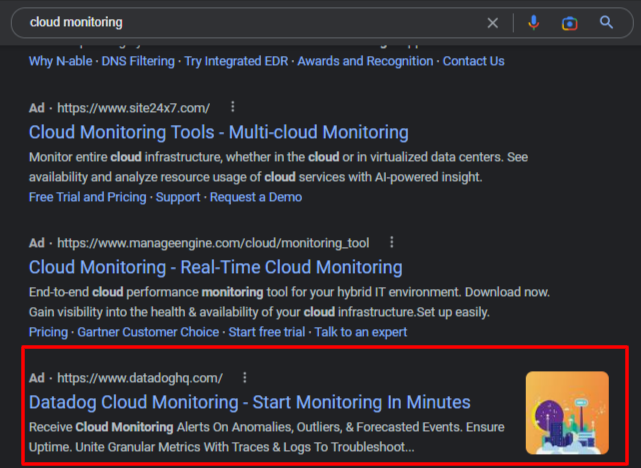
When you click on the ad, you come to this landing page. It has a clear value proposition, eye-catching image showing the dashboard, and a CTA.

Scroll down, and you’ll find reasons to use Datadog, social proof (customer logos) and a CTA at the top that scrolls with you.

Scroll further, and you’ll see a detailed list of benefits.

And then a visual look at how Datadog simplifies monitoring and security.
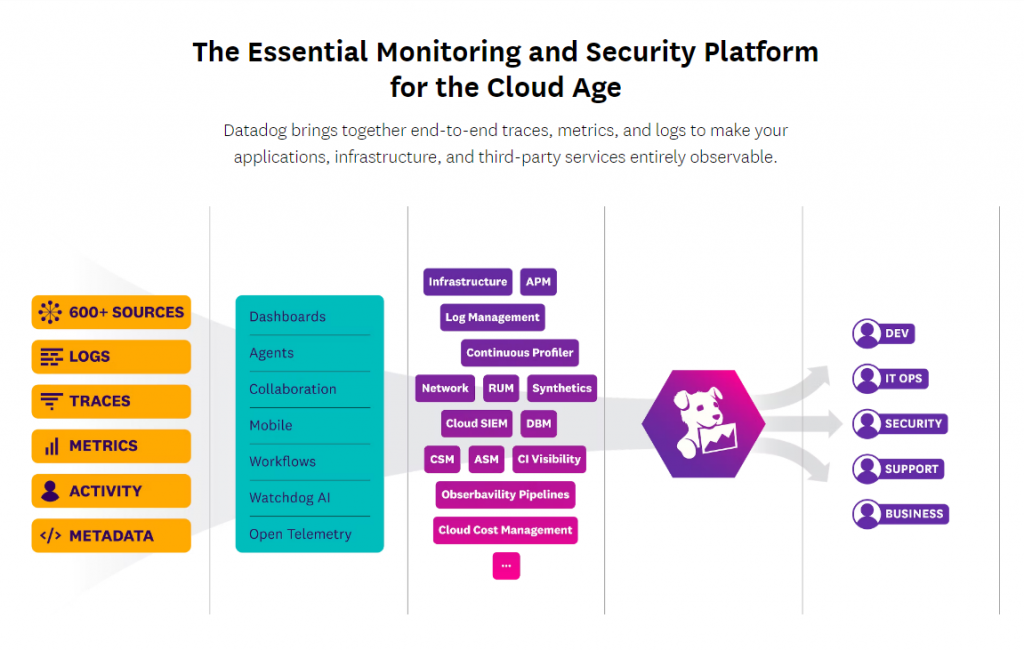
Then the CTA and more social proof.

When you click to start your free trial, this form appears:
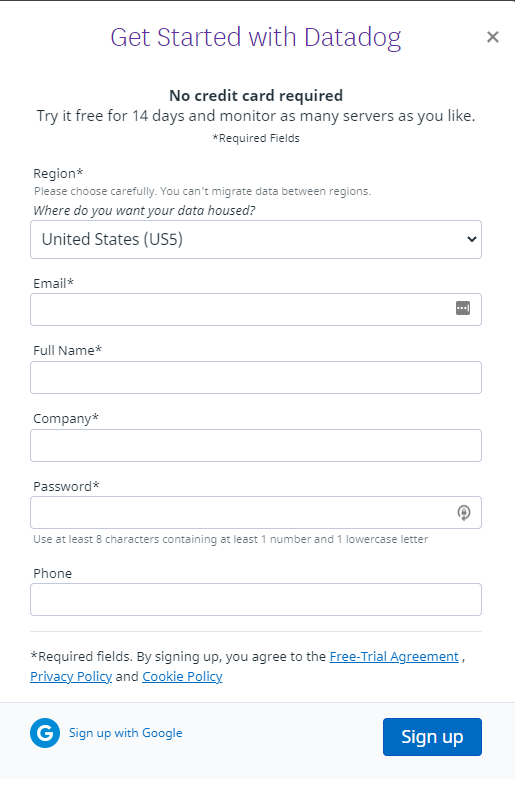
Not too long and asks necessary questions to help Datadog build a lead nurturing campaign.
The takeaway
B2B SaaS companies don’t need more leads — they need more of the right leads.
And with digital advertising, you can become a sharpshooter, aiming for prospects that are most likely to convert.
“SaaS is going through some tough times right now,” says Dang. “Demand in the space has suffered somewhat recently, with results from RingCentral, DocuSign, Atlassian, HubSpot, Snowflake, and Twilio reporting poor results in their most recent quarters.
However, SaaS is and will remain paramount to the proper functioning of any forward-thinking, ambitious organization and we believe these weak quarters to be temporary in nature. Those who are prepared during this period stand to gain valuable market share and come out of this stronger.”
But if you’re too busy doing what you do best — running a SaaS business — team up with HawkSEM. We specialize in digital advertising for SaaS companies and even have proprietary software, ConversionIQ, that pinpoints the best keywords to use to drive more qualified leads.
Interested in learning more? Book a demo with us today.

